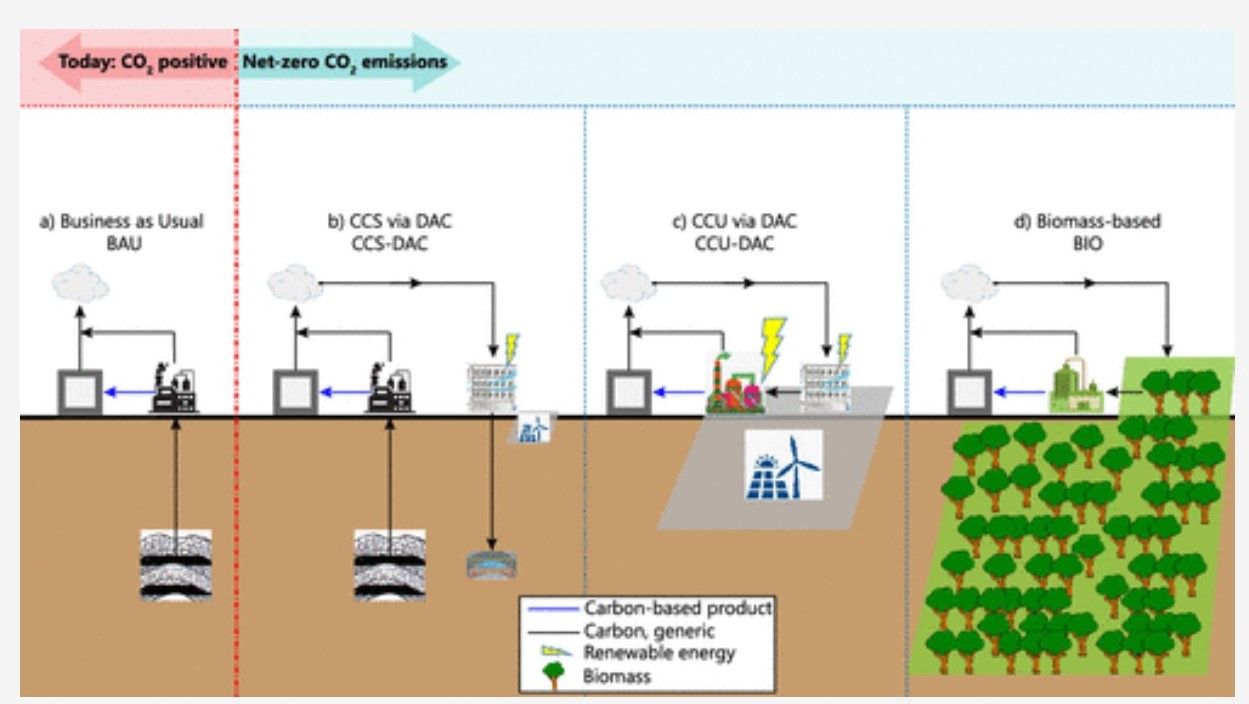The executive branch of the Swiss government, the Federal Council, has decided that the country will be carbon-neutral by 2050.
It is a noble statement, and one that through decent investment in non-fossil fuel electricity generation and electric cars can be achieved for most sectors. But meeting this target for one of the most energy intensive sectors of any economy, the chemical industry, will not be so easy.
However, a new study conducted by university researchers at the ETH in Zurich, has found that a carbon-neutral chemical industry by 2050 is possible, and there are even different ways to get there.

While the carbon footprint of most industries is based on electricity generation, the chemical industry is different in that so much of its carbon emissions are from raw materials.
Oil and natural gas are the source of chemical feedstocks for so many of the products around us. When these fossil fuels are converted into basic chemical products such as paraffins, naphthenes, and aromatics, and also when they are later consumed or decompose, they emit greenhouse gases that promote climate change.
“Polymers, plastics, synthetic textile fibres and medicines all contain carbon,” explains Marco Mazzotti, a Professor of Process Engineering at ETH Zurich who headed the research. “It has to come from somewhere.”
However, eliminating the chemical industry’s climate change impact, even from chemical feedstocks, may now be possible. As the university press release notes “Using concrete figures and methanol production as a case study, Mazzotti and co-workers from ETH Zurich and Utrecht University have now systematically compared various approaches that aim at reducing net CO2 emissions from the chemical industry to zero. The main conclusion from the new study is that the goal of achieving net-zero CO2 emissions in the chemical industry is in fact attainable.”
The study outlines three major routes to a carbon-neutral chemical industry.
Carbon Capture and Storage (CCS)
The systematic capture (either from the atmosphere or directly from factory emissions) and then sequestering of carbon dioxide underground is the simplest route to a carbon-neutral chemical industry. Crucially, it would not require any current industrial chemical production processes to change, however it would only delay the issue of climate changing carbon emissions. Requiring future generations and improved technology to solve the problem of carbon dioxide stored underground. A further issue is the lack of suitable underground storage sites around the world, as CCS requires a specific combination of geology, such as deep sedimentary layers that contain salt water.
Carbon Capture and Utilisation (CCU)
Alternatively, carbon from CO2 captured from the air or from industrial waste gases, could be used in chemical processes when combined with hydrogen obtained from water using electricity.
The drawback to this approach is that it would require a major overhaul of most chemical production processes, as well as an increase in electricity generation by as much as eight times the amount required for the carbon capture and storage method.
This fact alone, means that it would prohibit many countries from adopting this approach if their power production industries are based too heavily on fossil fuels.
As Mazzotto explains, “This method can be recommended only in countries with a carbon-neutral electricity mix. We clearly demonstrate that using large quantities of electricity from coal or gas-fired power stations would, in fact, be much worse for the climate than the current production method based on fossil fuels.”
Biomass (BIO)
The last option involves the use of biomass, such as wood, sugar producing crops and oil plants as raw material for the chemical industry.
While this method does not require as much electricity as the others, it needs a lot more land to grow the necessary crops and biomass.

As the study, now published by in the American Chemical Society states, “All routes are feasible and have different pros and cons.”
Specifically stating that, “… the CCU route results in an electricity consumption 10 to 25 times higher than that of the CCS and BIO routes (excluding the electricity required for heat production), mostly due to the electricity required to produce hydrogen. At the same time, the BIO route requires a land capacity about 40 and 400 times higher than that required by the CCU and CCS routes, respectively. Furthermore, when considering a net-positive-CO2 emissions world, the CO2 emissions of the CCU route grow about 8 to 10 times faster than that of the CCS and BIO routes.”
While it is pleasing that the study confirms that a carbon-neutral chemical industry is possible and is also able to provide options on how to proceed, the downside for each approach is considerable.

Investment in both chemical research and chemical process hardware is inevitable for all.
The most likely position is for individual countries and chemical industries to choose the route (or a combination of routes) that is right for them. A combination of geological position, available options for alternative electricity production (wind power, hydroelectric, solar) as well as the amount of land and investment funds available will all be decisive factors.
Ultimately though, the fourth option, chemical industry inaction, is no longer viable.
Photo credit: Free-Photos from Pixabay, JuergenPM from Pixabay, American Chemical Society & Marc B from Pixabay